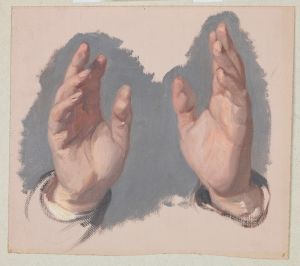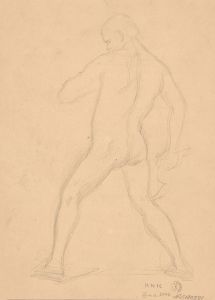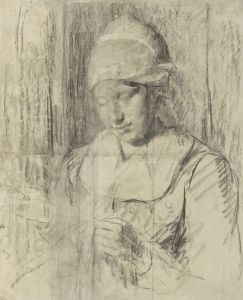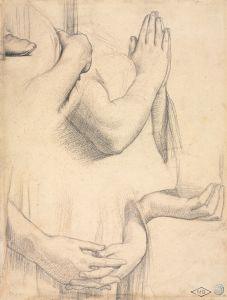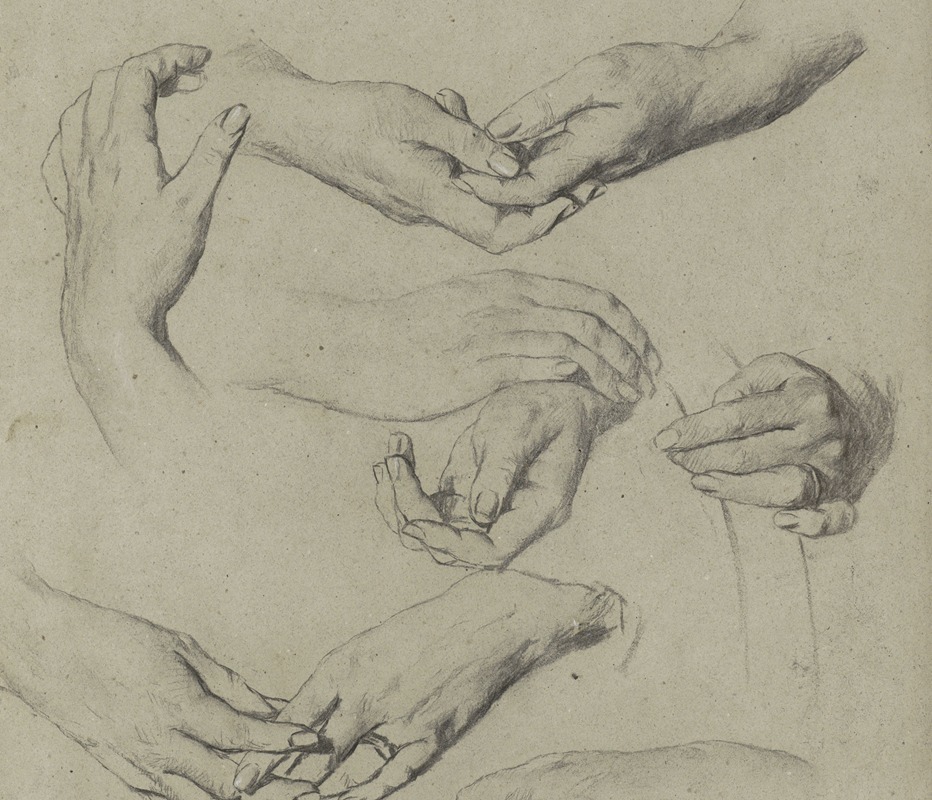
Studies van handen
A hand-painted replica of Thérèse Schwartze’s masterpiece Studies van handen, meticulously crafted by professional artists to capture the true essence of the original. Each piece is created with museum-quality canvas and rare mineral pigments, carefully painted by experienced artists with delicate brushstrokes and rich, layered colors to perfectly recreate the texture of the original artwork. Unlike machine-printed reproductions, this hand-painted version brings the painting to life, infused with the artist’s emotions and skill in every stroke. Whether for personal collection or home decoration, it instantly elevates the artistic atmosphere of any space.
Thérèse Schwartze was a prominent Dutch portrait painter known for her skillful and realistic depictions of her subjects. Born in Amsterdam in 1851, she was part of a family with a strong artistic background; her father, Johan Georg Schwartze, was also a painter. Thérèse Schwartze gained recognition in the late 19th and early 20th centuries for her portraits of the Dutch elite, including members of the royal family, and her works were highly sought after during her lifetime.
One of her notable works is "Studies van handen," which translates to "Studies of Hands." This piece exemplifies Schwartze's keen attention to detail and her ability to capture the subtleties of human anatomy. While specific details about "Studies van handen" are limited, it is understood to be a study focusing on the intricate and expressive nature of hands, a subject that has fascinated artists for centuries due to its complexity and expressive potential.
Schwartze's approach to painting was heavily influenced by the techniques of the Old Masters, which she studied extensively. Her ability to render textures and the play of light and shadow with precision is evident in her works. In "Studies van handen," she likely employed these techniques to explore the form and movement of hands, capturing their grace and expressiveness.
Throughout her career, Schwartze was celebrated for her ability to convey the personality and status of her sitters through her portraits. Her works often featured a high level of realism, achieved through meticulous attention to detail and a deep understanding of her subjects. This skill is likely reflected in "Studies van handen," where the focus on hands would require a similar level of observation and technical proficiency.
Thérèse Schwartze's contributions to the art world were significant, and she was one of the few female artists of her time to achieve widespread acclaim. Her works were exhibited in prestigious venues, and she received numerous awards and honors throughout her career. Schwartze was also a member of several art societies, including the Arti et Amicitiae in Amsterdam, which further established her reputation as a leading artist of her era.
Despite the lack of extensive documentation on "Studies van handen," the work remains an important part of Schwartze's oeuvre, showcasing her dedication to exploring different aspects of portraiture and human anatomy. Her legacy continues to be celebrated in the Netherlands and beyond, with her paintings held in various public and private collections.
In summary, "Studies van handen" by Thérèse Schwartze is a testament to her skill as a portrait artist and her ability to capture the nuances of human expression through detailed studies. While specific information about this particular work is limited, it is representative of Schwartze's broader artistic achievements and her contribution to the field of portrait painting.





